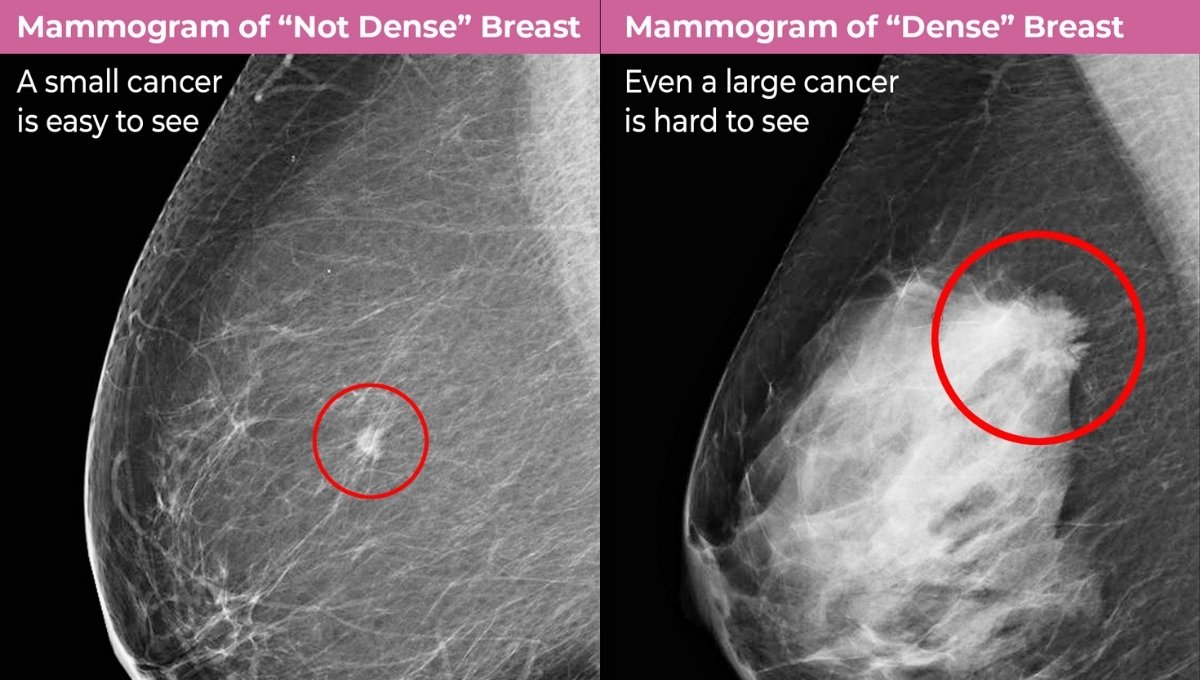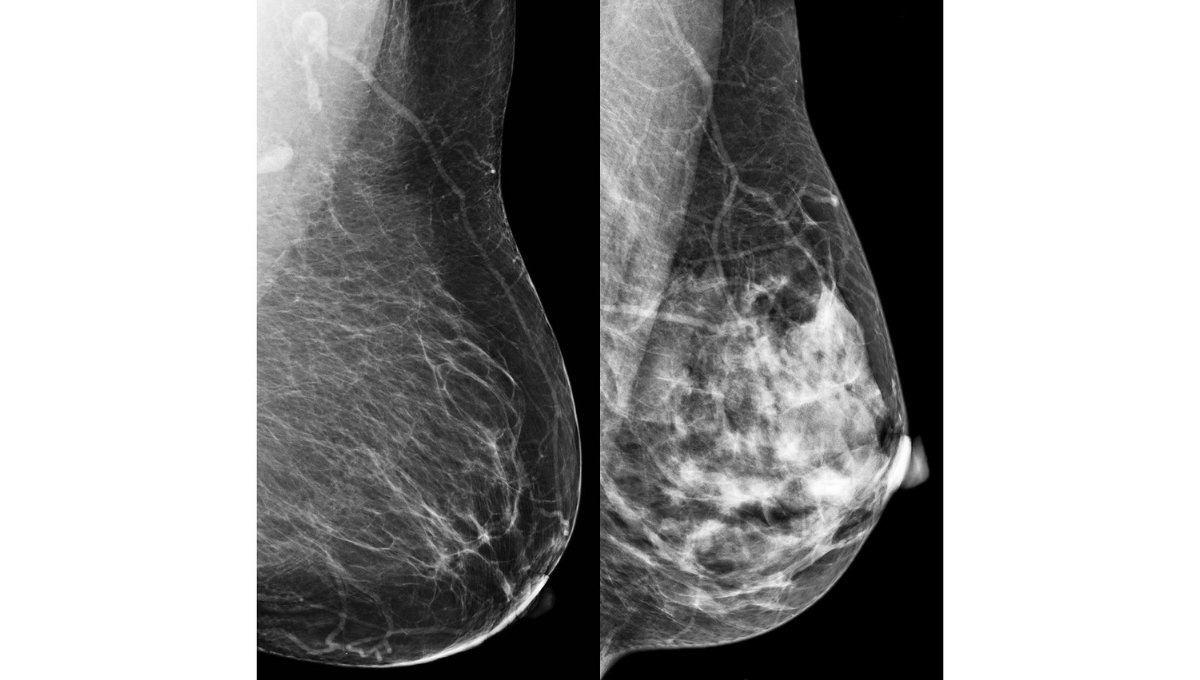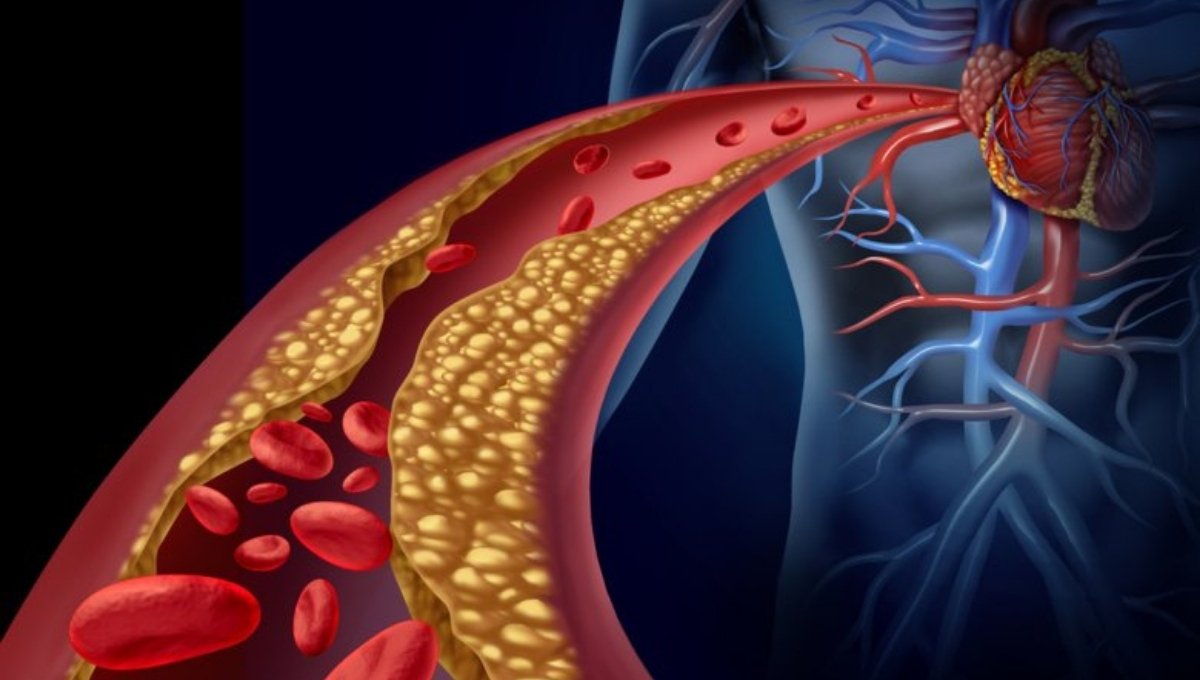Dense Breast Risk: Important facts about women’s health have surfaced during Breast Cancer Awareness Month. According to research, women with dense breasts are four to six times more likely than those with typical breast density to have breast cancer. Despite the technical nature of this subject, many women are not aware of this elevated risk.
What is breast density?

The proportion of fat to glandular or fibrous tissue in the breast is known as breast density. Dense breasts are defined as having more fibrous tissue and less fat in the breasts. Although it is a typical physical trait, a high level of it may cause problems for screening procedures, such as mammography.
Neither sight nor touch can predict breast density. It needs a mammography, which divides breast tissue into four categories: scattered, heterogeneously dense, highly dense, and nearly fatty. Dense breasts fall under the last two groups.
What is the link between dense breasts and cancer?
The fact that both malignant tumors and dense tissue show up as white on a mammography, making early diagnosis challenging, is a significant danger associated with dense breasts. Because of this, women who have dense breasts are more likely to get breast cancer, which is frequently discovered too late. Occasionally, a mammography fails to identify the cancer and it is only found later.
Dense Breast Risk: Why does the risk increase?
You do not necessarily have cancer if your breasts are thick. Dense breasts, however, are thought to be a significant risk factor for breast cancer. Research indicates that the risk of breast cancer is four to six times higher for women with thick breasts. Moreover, the presence of additional variables like age, hormonal abnormalities, or family history may raise the risk even more.
Why is a mammogram so important?
A mammography is the most precise method of assessing breast density. This test shows the inside structure of the breast tissue using X-rays. In addition to a standard mammogram, doctors may also suggest ultrasound, MRI, or 3D mammography because mammograms have some limits when it comes to dense breast tissue.
How to manage dense breasts?
Although they raise the risk of cancer, dense breasts are not a disease. Women should therefore be screened on a regular basis. In addition to routine mammograms, you might require other testing if your breasts are thick. In order for your doctor to choose the right tests for your unique risk profile, make sure to let them know about your medical history as well.
How important is a healthy lifestyle?

A healthy lifestyle can dramatically lower the risk of cancer, even though breast density cannot be managed. A balanced diet, regular exercise, abstaining from alcohol and tobacco, and keeping a healthy weight are all good for general health. Additionally, yearly breast exams are crucial, particularly for women over 40.
Doctor’s advice for women with dense breasts
Many medical professionals advise getting additional testing if your mammogram reveals thick breast tissue in order to “detect breast cancer early.” This could involve choices like MRI or ultrasonography. Additionally, you should notify your doctor right away if you notice any changes to your breasts, including lumps, soreness, or changes in the skin.
Knowledge and awareness are the best protection
Women need to be educated about breast density. Many women put off screenings because they don’t know what breast density is. For this reason, cancer is frequently discovered at an advanced stage. The three main components of cancer prevention are awareness, prompt screening, and routine follow-up.
Also read:
Boost Hormone Health: 7 Easy Habits That Can Transform Your Life
117-Year-Old Health Study: How Genetics and Lifestyle Combined for Extreme Longevity
Healthy Heart Diets Exposed: What 90% People Get Wrong About Eating Right














